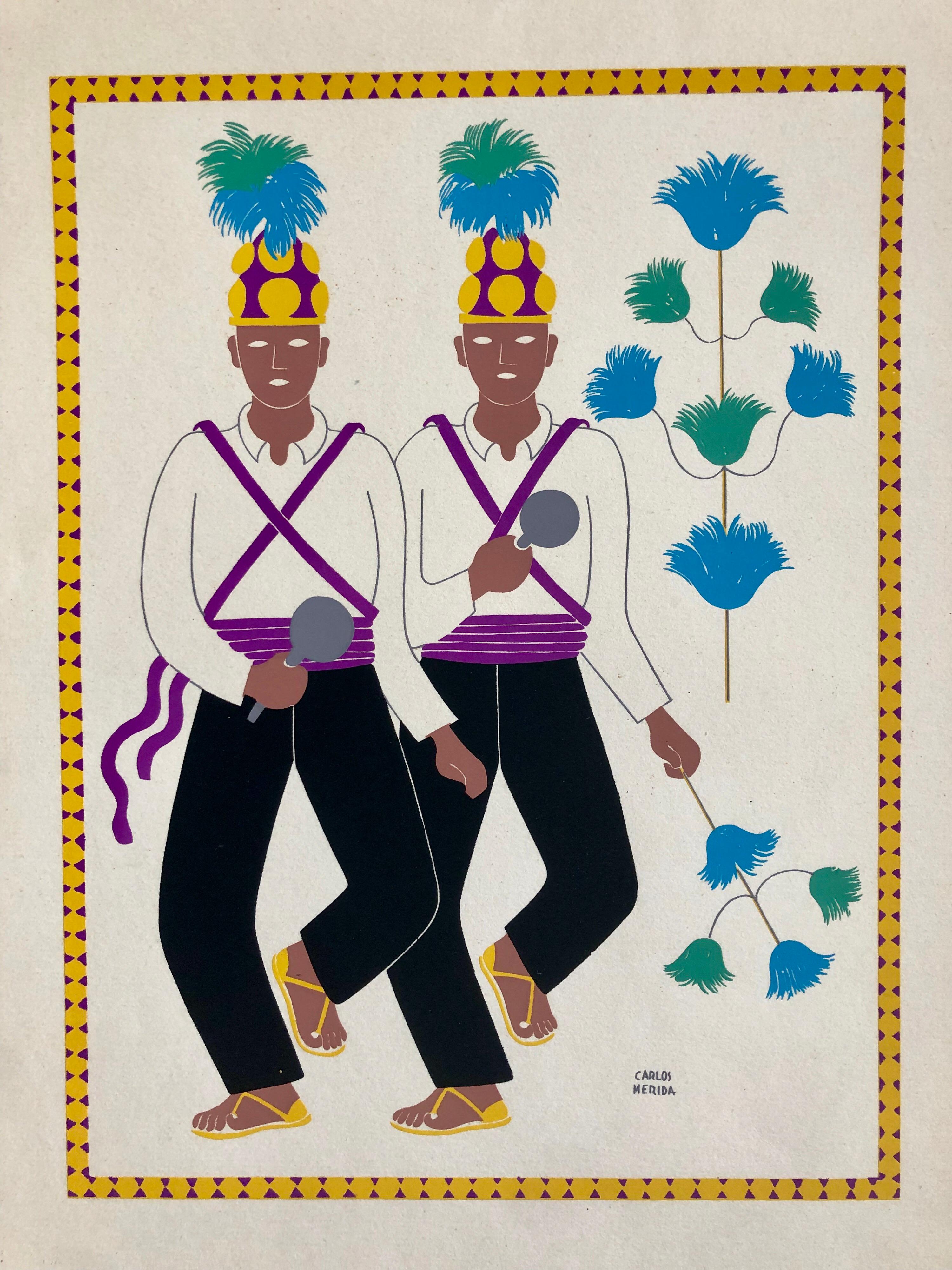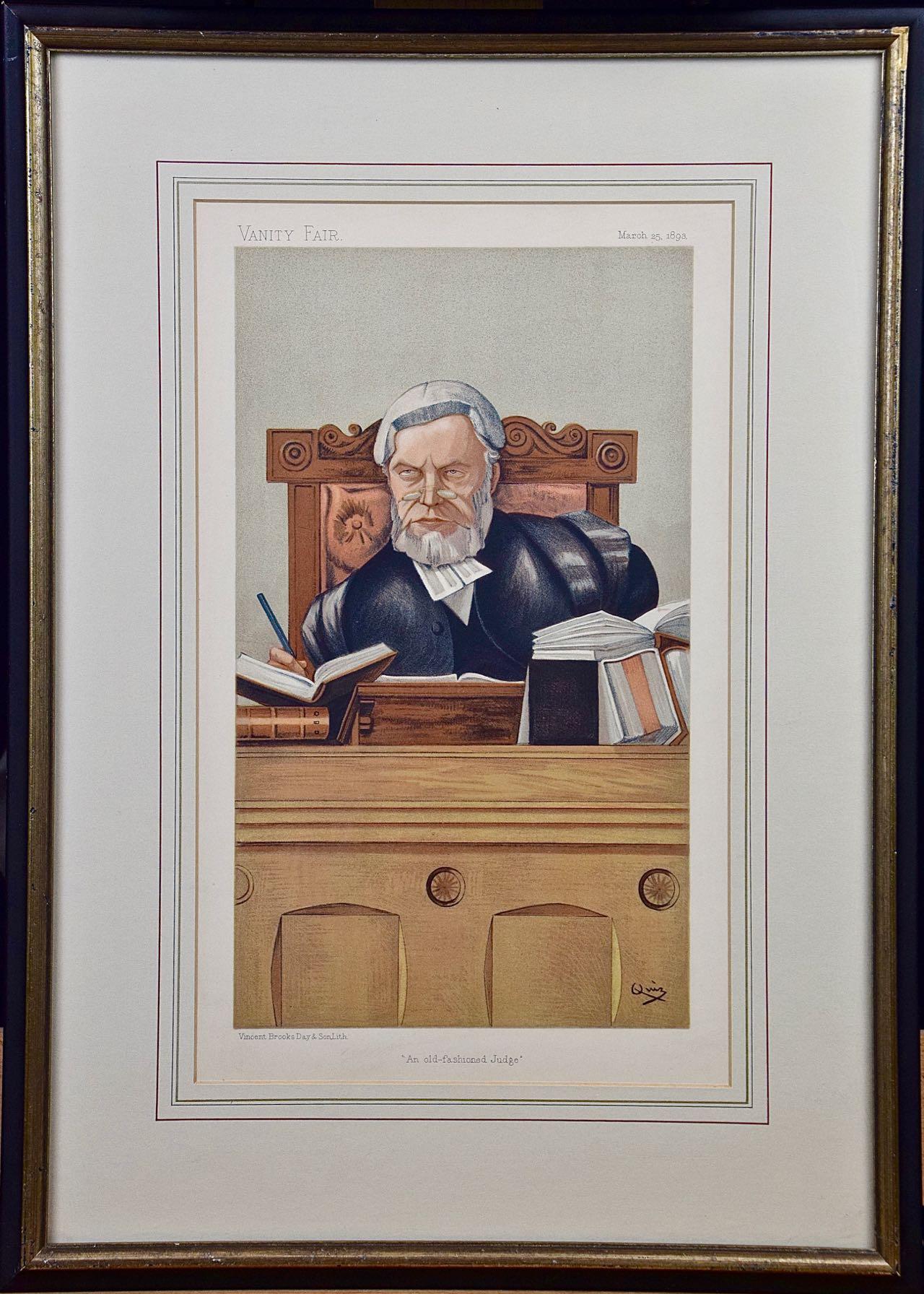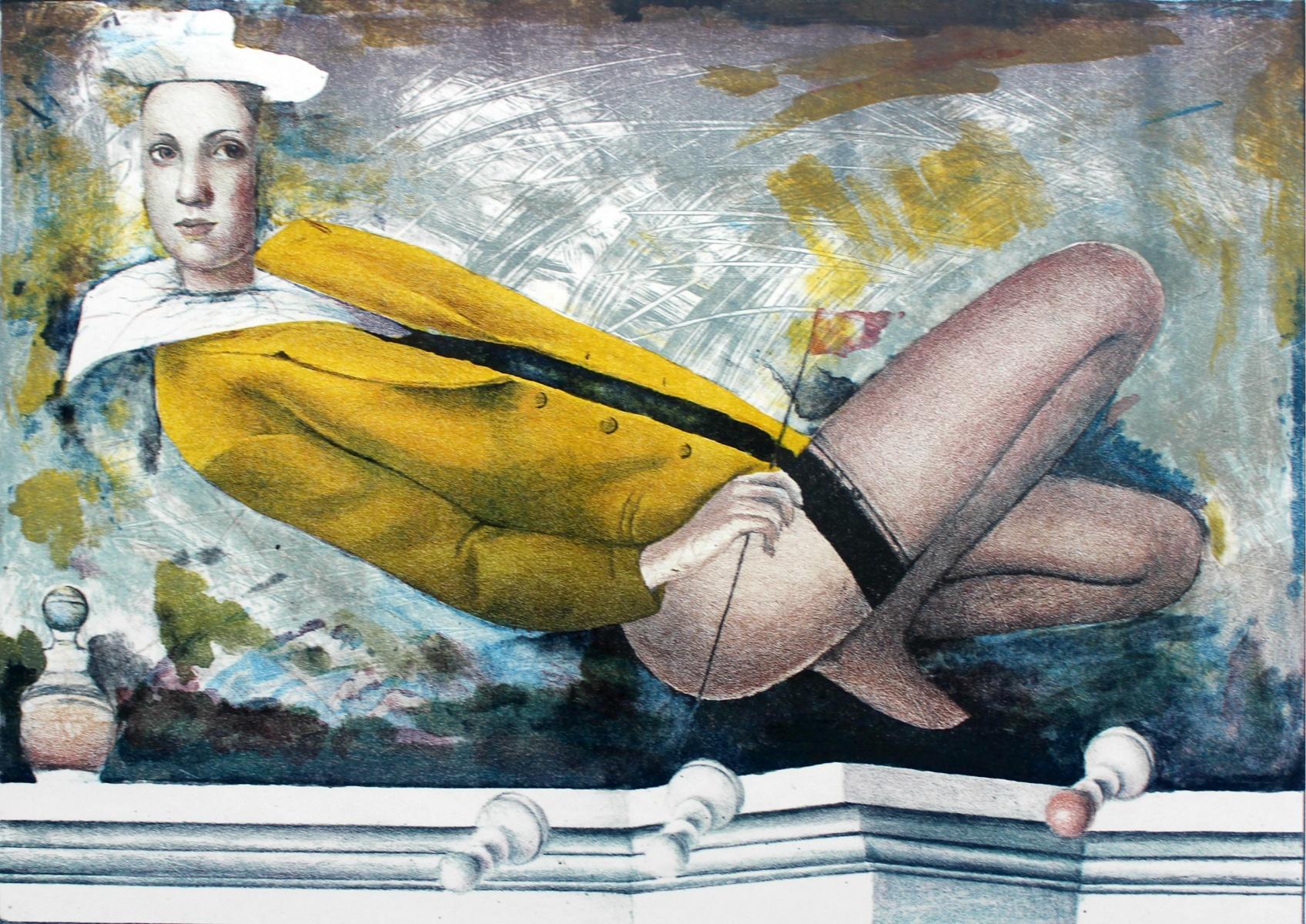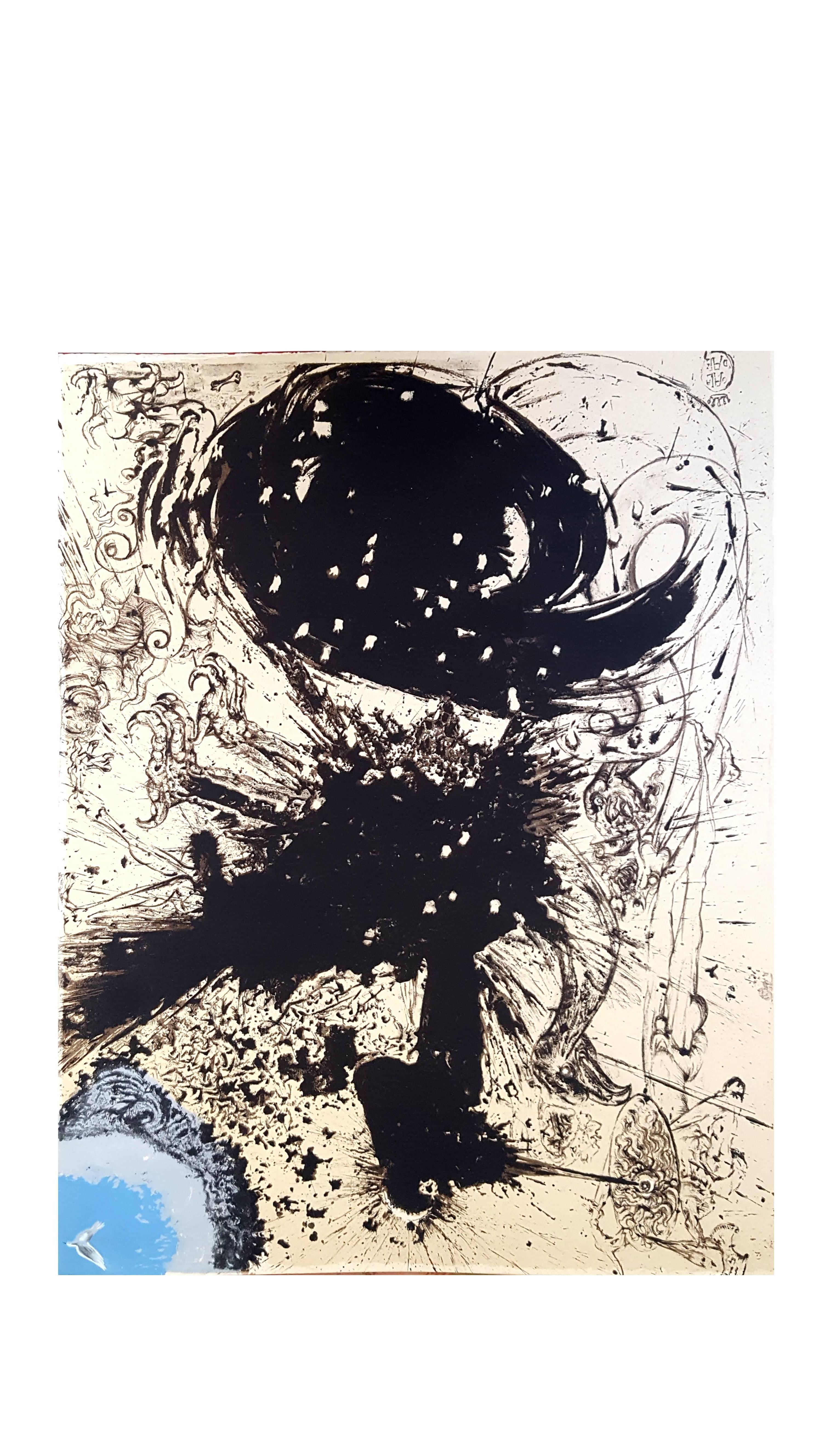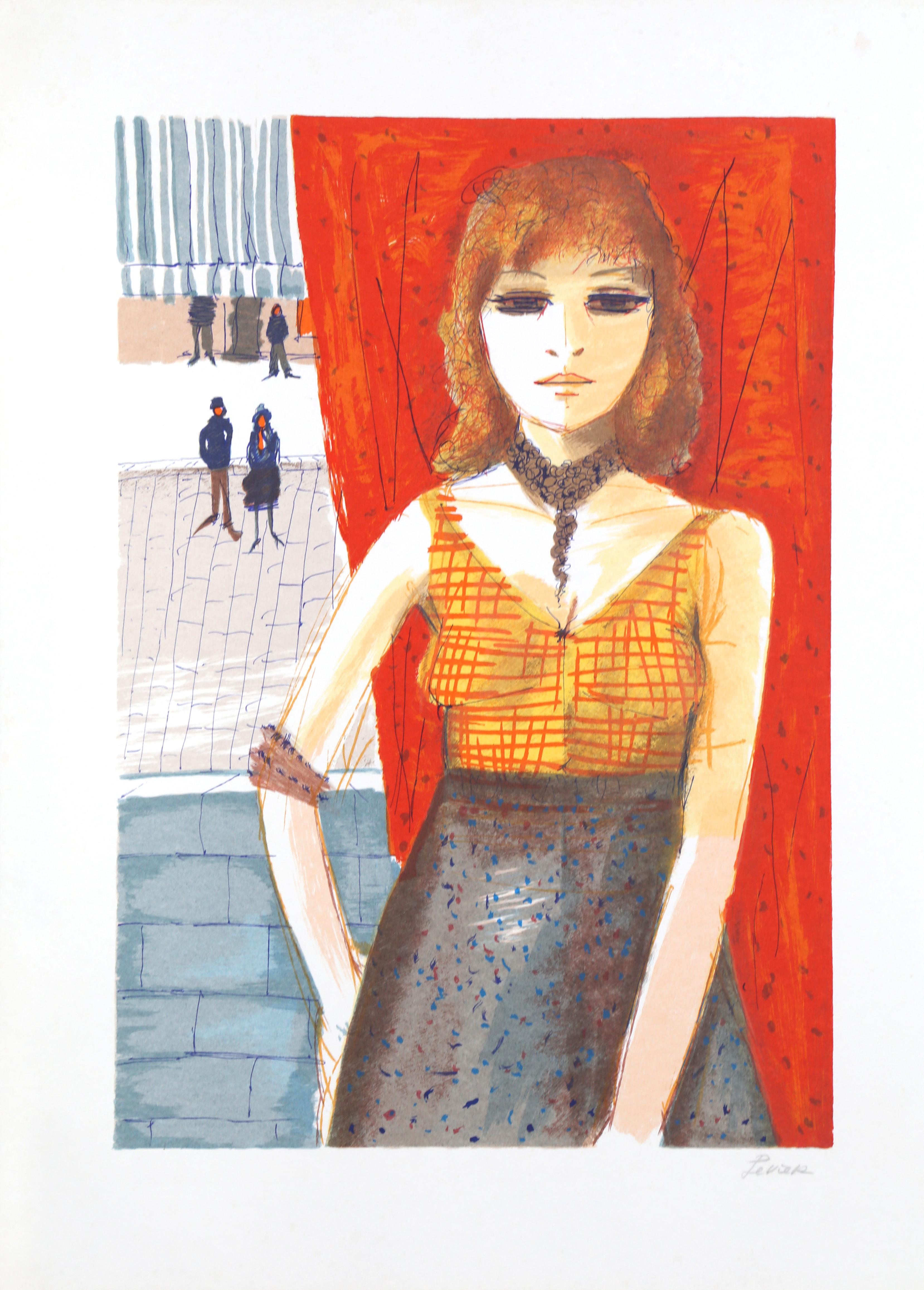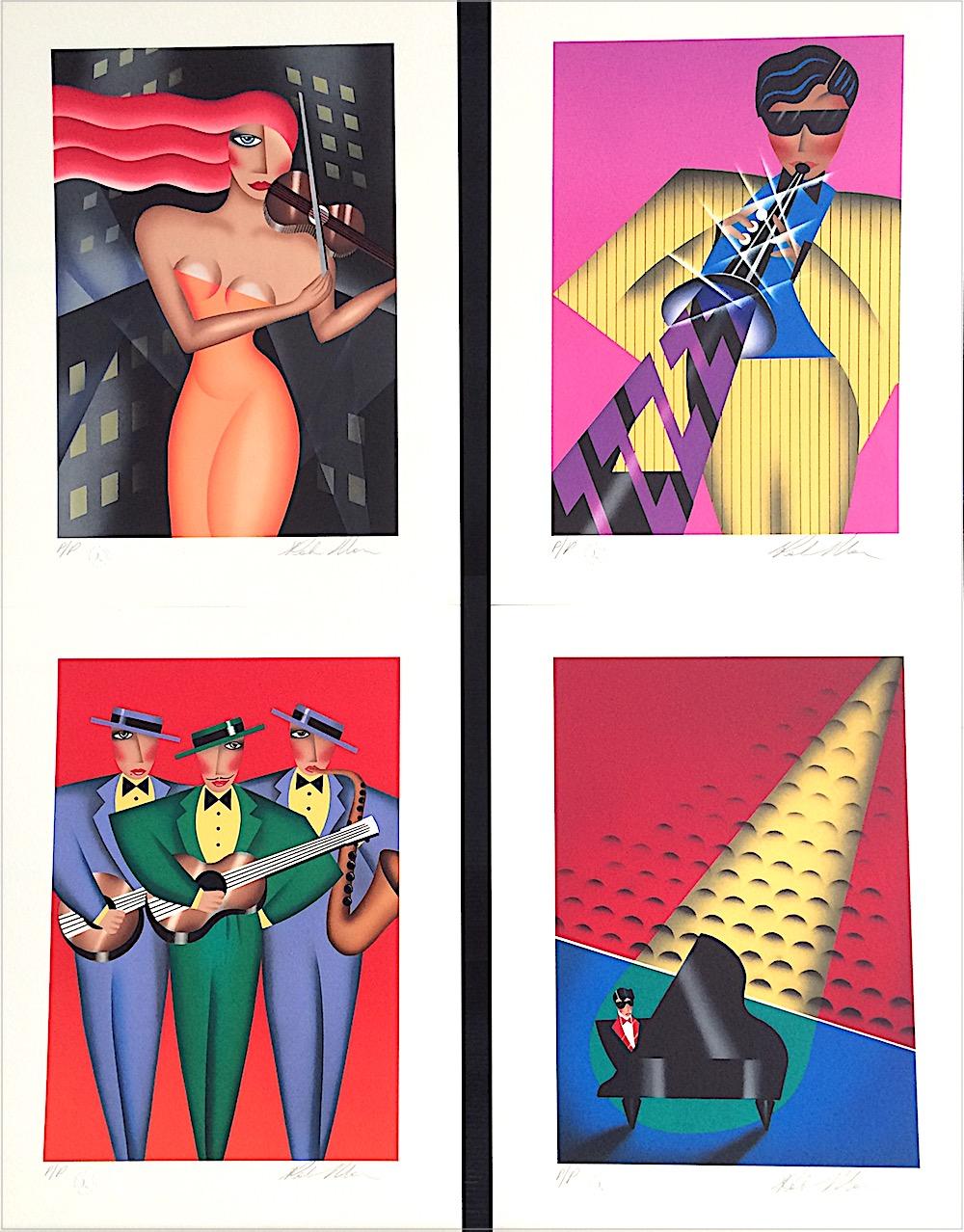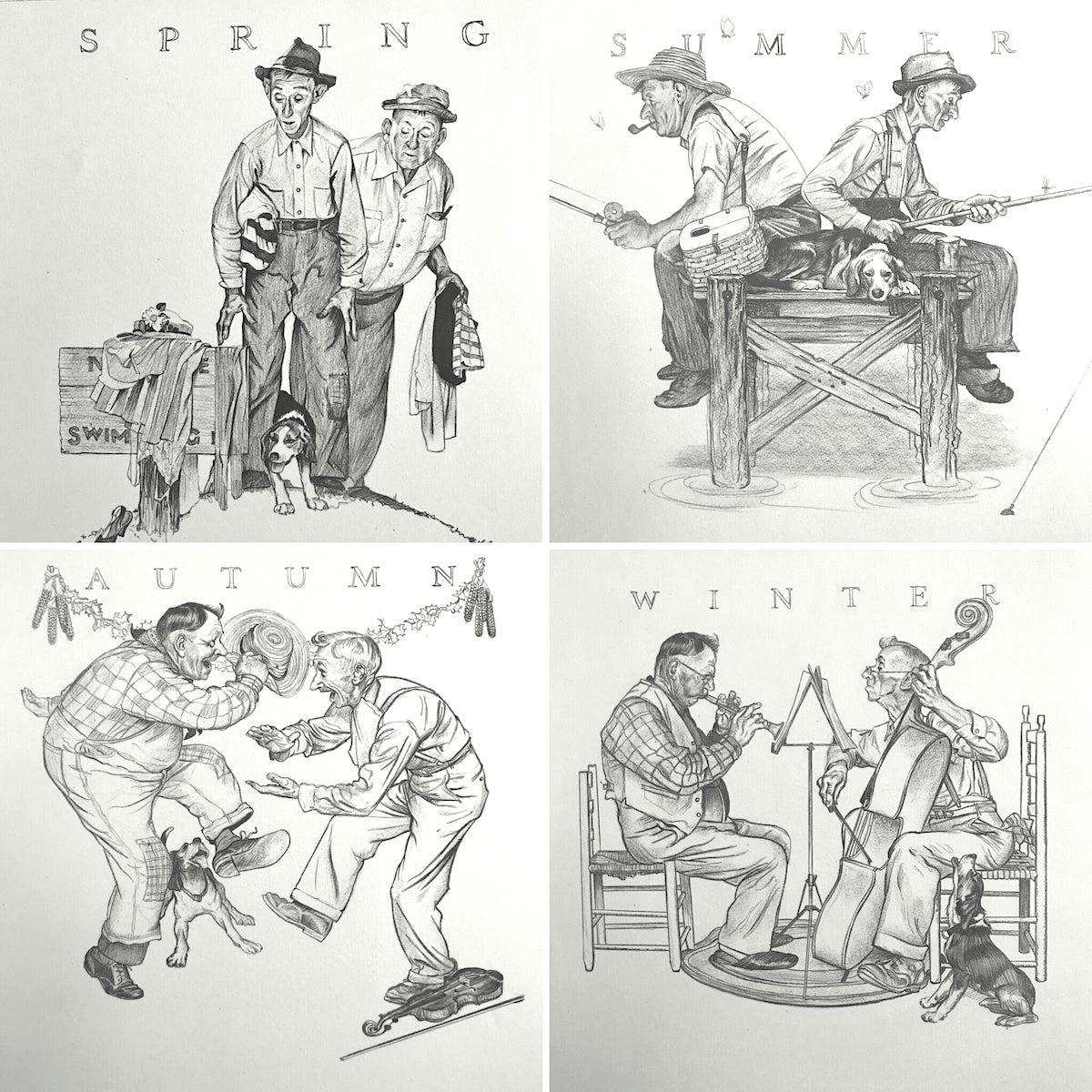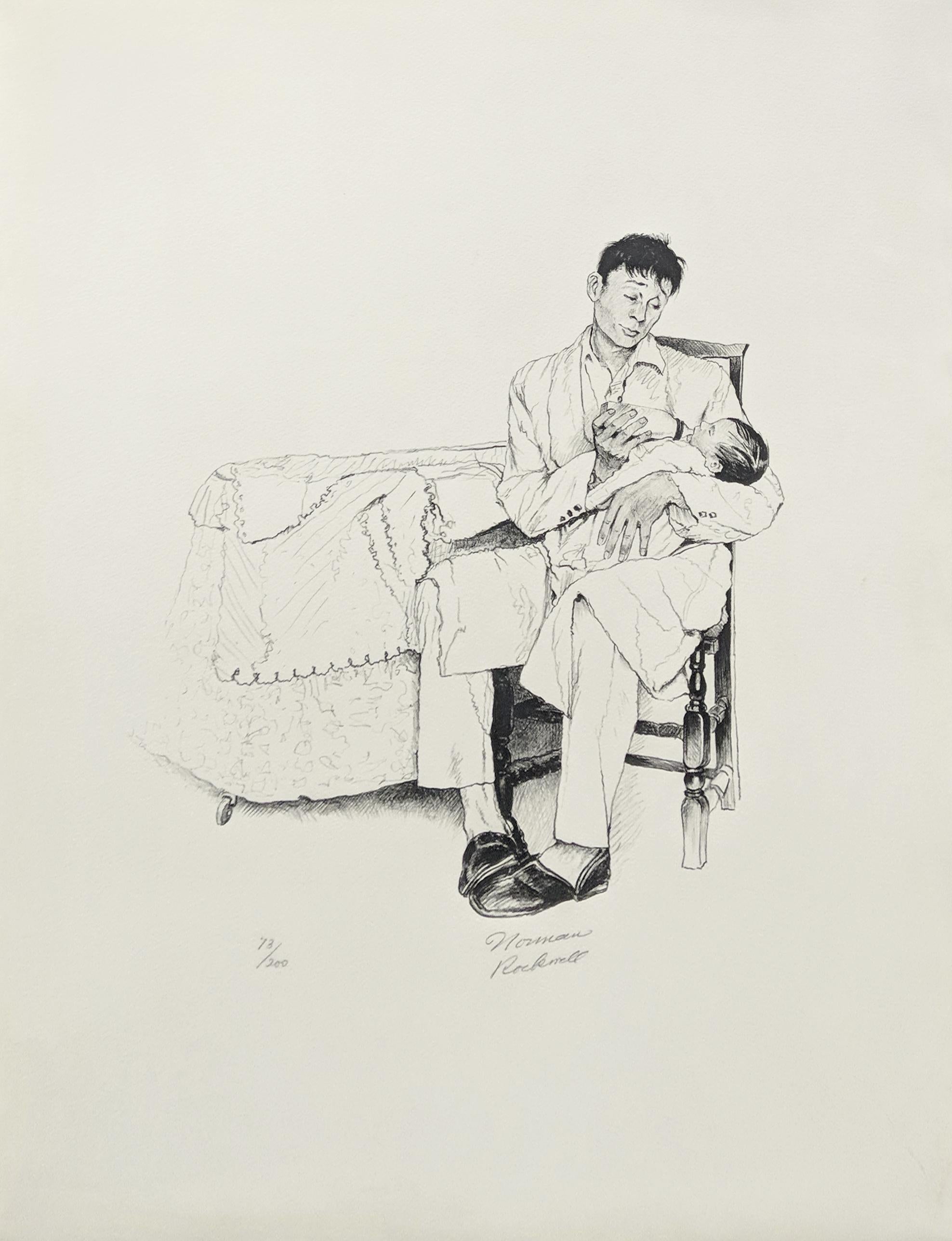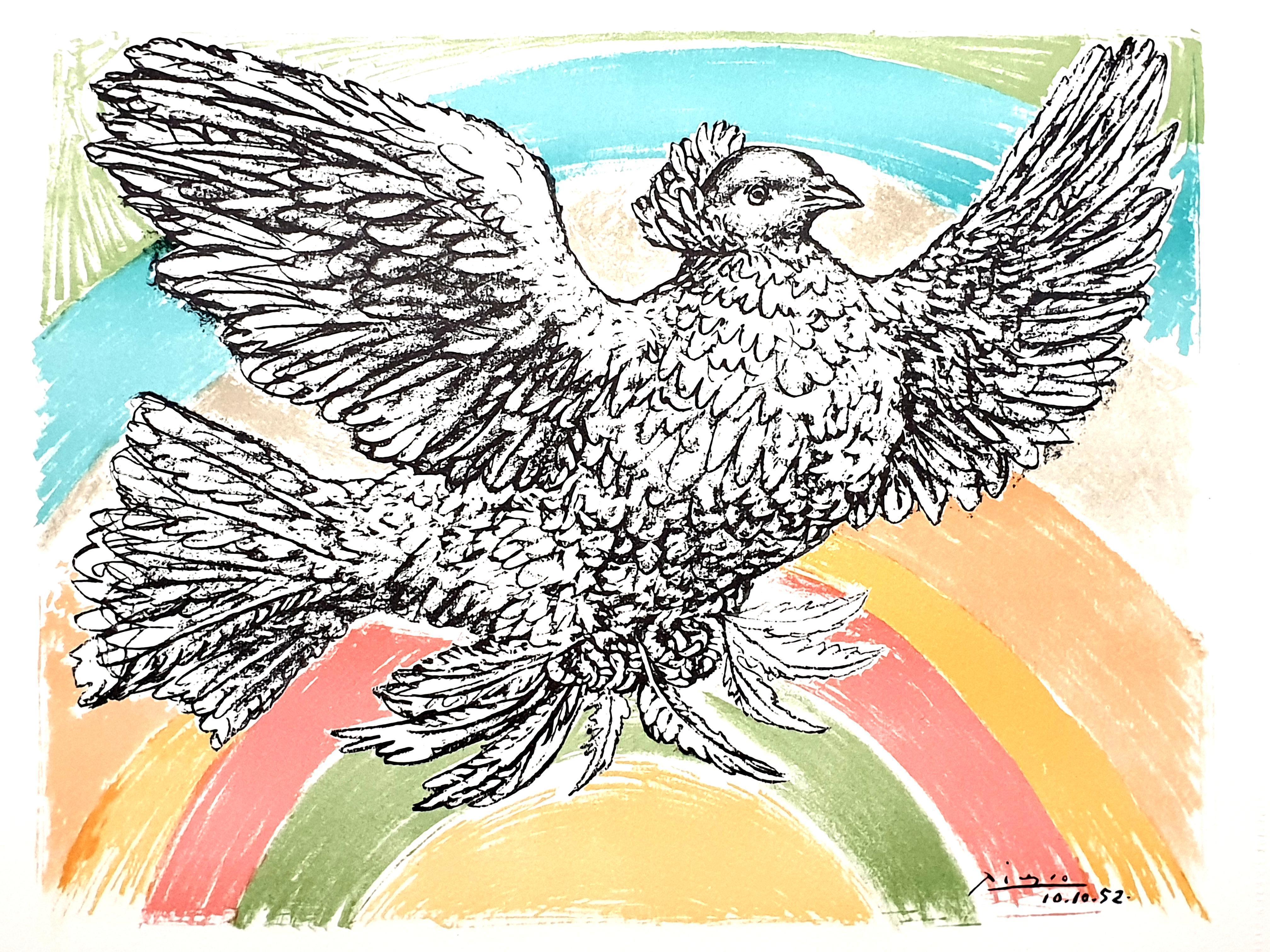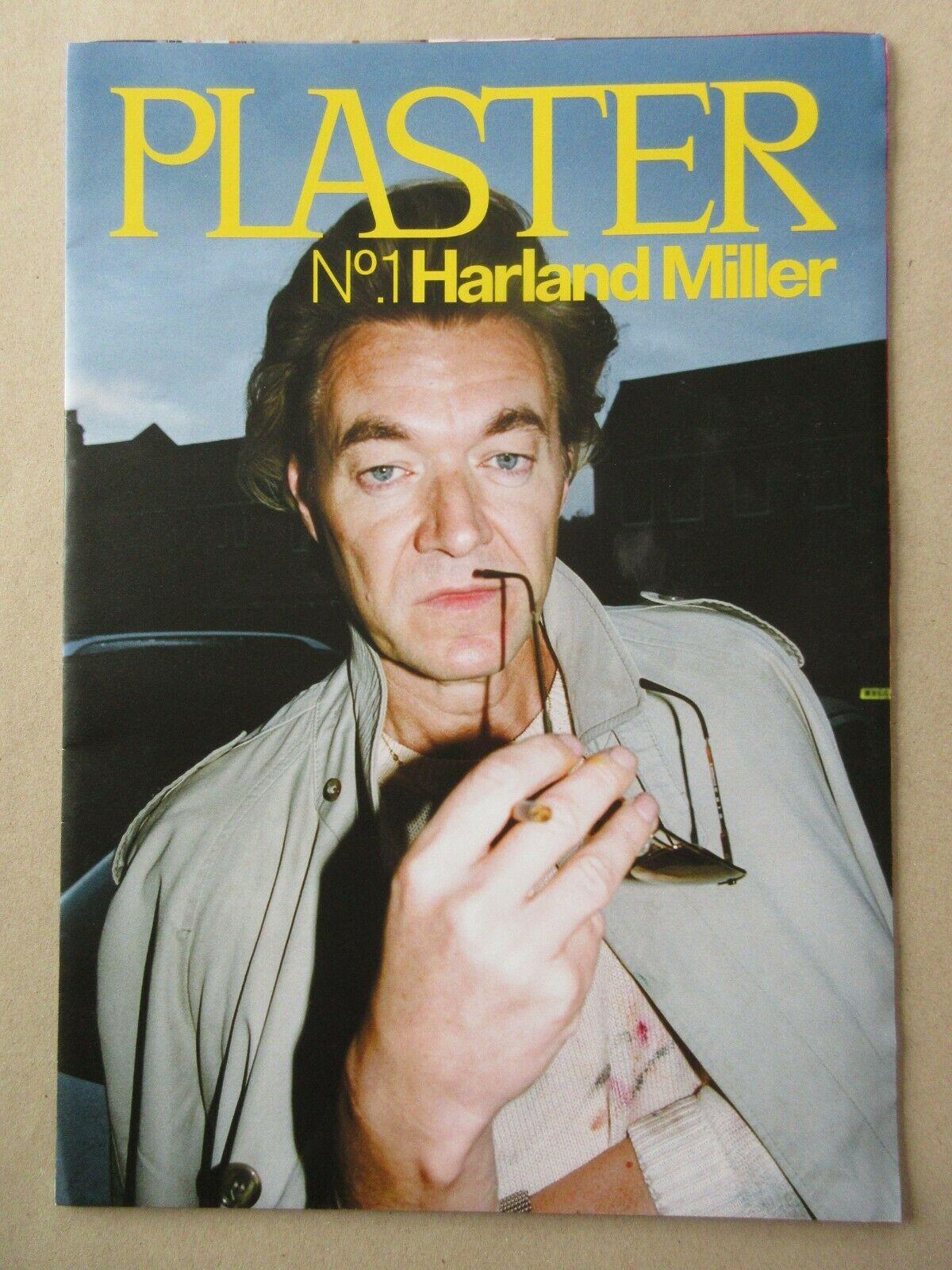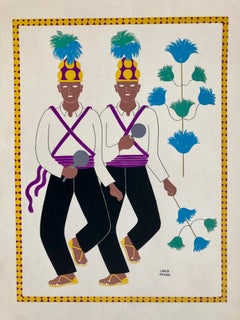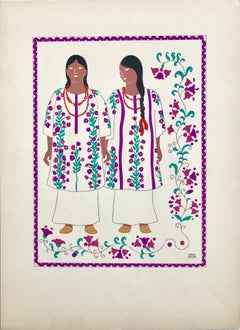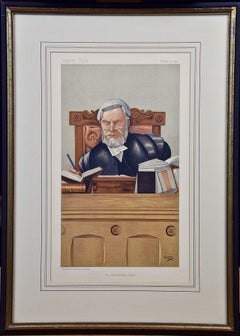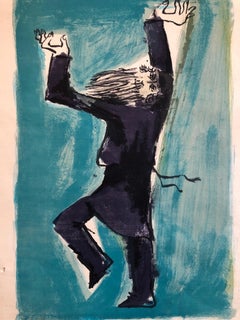
Israeli Modernist Judaica Chabad Hasidic Dancer Lithograph
View Similar Items
Want more images or videos?
Request additional images or videos from the seller
1 of 9
Sami BrissIsraeli Modernist Judaica Chabad Hasidic Dancer Lithograph
About the Item
- Creator:Sami Briss (1930, French)
- Dimensions:Height: 19.5 in (49.53 cm)Width: 13.75 in (34.93 cm)
- Medium:
- Movement & Style:
- Period:
- Condition:foxing and a small puncture in margin. please see photos.
- Gallery Location:Surfside, FL
- Reference Number:1stDibs: LU3823512382
About the Seller
4.9
Platinum Seller
These expertly vetted sellers are 1stDibs' most experienced sellers and are rated highest by our customers.
Established in 1995
1stDibs seller since 2014
1,541 sales on 1stDibs
Typical response time: 1 hour
More From This SellerView All
- 1945 Mexican Modernist Silkscreen Serigraph Print Regional Folk Art Dress MexicoLocated in Surfside, FLThis listing is for the one Silkscreen serigraph piece listed here. Mexico City, 1945. First edition. plate signed, limited edition of 1000, these serigraph plates depict various types of traditional and folk art indigenous clothing and costume styles from around Mexico. The illustrations depict the cultures of many different states in Mexico, including Oaxaca, Chiapas, Jalisco and Veracruz. Carlos Mérida (December 2, 1891 – December 21, 1985) was a Guatemalan artist who was one of the first to fuse European modern painting to Latin American themes, especially those related to Guatemala and Mexico. He was part of the Mexican muralism movement in subject matter but less so in style, favoring a non-figurative and later geometric style rather than a figurative, narrative style. Mérida is best known for canvas and mural work, the latter including elements such as glass and ceramic mosaic on major constructions in the 1950s and 1960s. One of his major works, on the Benito Juarez housing complex, was completely destroyed with the 1985 Mexico City earthquake, but a monument to it exists at another complex in the south of the city. Carlos Mérida was born Carlos Santiago Ortega in Guatemala City to Serapio Santiago Mérida and Guadalupe Ortega Barnoya. He later changed his name what is known by as he thought it was more sonorous. His brothers and children also took the Mérida name later on. He was of mixed Spanish/Maya-Quiché heritage which he promoted during his life. As a young child, Mérida had both music and art lessons, and his first passion was music, which led to piano lessons. He studied at a trade school called the Instituto de Artes y Oficios, then the Instituto de Ciencias y Letras. Here he began to have a reputation for the avant garde. Merída’s first trip to the United States was in 1917, where he met writer Juan José Tablada. Mérida made several trips to Europe over his lifetime to both study art and work as an artist and diplomat. His early trips in the 1920s and 1930s put him in touch with both avant garde movements in Europe as well as noted Latin American artists, especially those from Mexico. His last trip was in 1950s. In 1963, he donated canvases, graphic pieces and mural sketches to the Universidad Nacional Autónoma de Mexico. Merida was one of a number of artists such as Diego Rivera and Gerardo Murillo who became committed to promoting the handcrafts and folk art of Mexico and Central America, with a particular interest in those of Guatemala, often featuring Mayan textiles or elements in their decoration in his artwork. He died in Mexico City at the age of 94 on December 21, 1985. As there was little opportunity for artists in Guatemala, in 1910, Mérida traveled to Paris with a friend named Carlos Valenti on a German cargo ship. From then until 1914, he lived and worked in Paris and traveled much of Europe. This put him in touch with European avant garde artists such as Van Dagen, Amedeo Modigliani, Pablo Picasso and Piet Mondrian as well as Latin American artists studying in Europe such as Diego Rivera, Jorge Enciso, Ángel Zárraga and Dr. Atl. He exhibited his work in venues such as the Independent Salon and the Giroux Gallery in Paris. Mérida has forty five exhibitions in the United States and eighteen in Mexico from 1928 to 1948. These included an exhibition with Rufino Tamayo at the Art Center of New York (1930), the John Becker and Valentine galleries in New York (1930), the Club de Escritores de México and the Galería Posada in Mexico City (1931), the Stendhal Gallery and the Stanley Rose...Category
1940s Folk Art Figurative Prints
MaterialsScreen
- 1945 Mexican Modernist Silkscreen Serigraph Print Regional Folk Art Dress MexicoLocated in Surfside, FLThis listing is for the one Silkscreen serigraph piece listed here. Mexico City, 1945. First edition. plate signed, limited edition of 1000, these serigraph plates depict various types of traditional and folk art indigenous clothing and costume styles from around Mexico. The illustrations depict the cultures of many different states in Mexico, including Oaxaca, Chiapas, Jalisco and Veracruz. Carlos Mérida (December 2, 1891 – December 21, 1985) was a Guatemalan artist who was one of the first to fuse European modern painting to Latin American themes, especially those related to Guatemala and Mexico. He was part of the Mexican muralism movement in subject matter but less so in style, favoring a non-figurative and later geometric style rather than a figurative, narrative style. Mérida is best known for canvas and mural work, the latter including elements such as glass and ceramic mosaic on major constructions in the 1950s and 1960s. One of his major works, on the Benito Juarez housing complex, was completely destroyed with the 1985 Mexico City earthquake, but a monument to it exists at another complex in the south of the city. Carlos Mérida was born Carlos Santiago Ortega in Guatemala City to Serapio Santiago Mérida and Guadalupe Ortega Barnoya. He later changed his name what is known by as he thought it was more sonorous. His brothers and children also took the Mérida name later on. He was of mixed Spanish/Maya-Quiché heritage which he promoted during his life. As a young child, Mérida had both music and art lessons, and his first passion was music, which led to piano lessons. He studied at a trade school called the Instituto de Artes y Oficios, then the Instituto de Ciencias y Letras. Here he began to have a reputation for the avant garde. Merída’s first trip to the United States was in 1917, where he met writer Juan José Tablada. Mérida made several trips to Europe over his lifetime to both study art and work as an artist and diplomat. His early trips in the 1920s and 1930s put him in touch with both avant garde movements in Europe as well as noted Latin American artists, especially those from Mexico. His last trip was in 1950s. In 1963, he donated canvases, graphic pieces and mural sketches to the Universidad Nacional Autónoma de Mexico. Merida was one of a number of artists such as Diego Rivera and Gerardo Murillo who became committed to promoting the handcrafts and folk art of Mexico and Central America, with a particular interest in those of Guatemala, often featuring Mayan textiles or elements in their decoration in his artwork. He died in Mexico City at the age of 94 on December 21, 1985. As there was little opportunity for artists in Guatemala, in 1910, Mérida traveled to Paris with a friend named Carlos Valenti on a German cargo ship. From then until 1914, he lived and worked in Paris and traveled much of Europe. This put him in touch with European avant garde artists such as Van Dagen, Amedeo Modigliani, Pablo Picasso and Piet Mondrian as well as Latin American artists studying in Europe such as Diego Rivera, Jorge Enciso, Ángel Zárraga and Dr. Atl. He exhibited his work in venues such as the Independent Salon and the Giroux Gallery in Paris. Mérida has forty five exhibitions in the United States and eighteen in Mexico from 1928 to 1948. These included an exhibition with Rufino Tamayo at the Art Center of New York (1930), the John Becker and Valentine galleries in New York (1930), the Club de Escritores de México and the Galería Posada in Mexico City (1931), the Stendhal Gallery and the Stanley Rose...Category
1940s Folk Art Portrait Prints
MaterialsScreen
- 1945 Mexican Modernist Silkscreen Serigraph Print Regional Folk Art Dress MexicoLocated in Surfside, FLThis listing is for the one Silkscreen serigraph piece listed here. Mexico City, 1945. First edition. plate signed, limited edition of 1000, these serigraph plates depict various types of traditional and folk art indigenous clothing and costume styles from around Mexico. The illustrations depict the cultures of many different states in Mexico, including Oaxaca, Chiapas, Jalisco and Veracruz. Carlos Mérida (December 2, 1891 – December 21, 1985) was a Guatemalan artist who was one of the first to fuse European modern painting to Latin American themes, especially those related to Guatemala and Mexico. He was part of the Mexican muralism movement in subject matter but less so in style, favoring a non-figurative and later geometric style rather than a figurative, narrative style. Mérida is best known for canvas and mural work, the latter including elements such as glass and ceramic mosaic on major constructions in the 1950s and 1960s. One of his major works, on the Benito Juarez housing complex, was completely destroyed with the 1985 Mexico City earthquake, but a monument to it exists at another complex in the south of the city. Carlos Mérida was born Carlos Santiago Ortega in Guatemala City to Serapio Santiago Mérida and Guadalupe Ortega Barnoya. He later changed his name what is known by as he thought it was more sonorous. His brothers and children also took the Mérida name later on. He was of mixed Spanish/Maya-Quiché heritage which he promoted during his life. As a young child, Mérida had both music and art lessons, and his first passion was music, which led to piano lessons. He studied at a trade school called the Instituto de Artes y Oficios, then the Instituto de Ciencias y Letras. Here he began to have a reputation for the avant garde. Merída’s first trip to the United States was in 1917, where he met writer Juan José Tablada. Mérida made several trips to Europe over his lifetime to both study art and work as an artist and diplomat. His early trips in the 1920s and 1930s put him in touch with both avant garde movements in Europe as well as noted Latin American artists, especially those from Mexico. His last trip was in 1950s. In 1963, he donated canvases, graphic pieces and mural sketches to the Universidad Nacional Autónoma de Mexico. Merida was one of a number of artists such as Diego Rivera and Gerardo Murillo who became committed to promoting the handcrafts and folk art of Mexico and Central America, with a particular interest in those of Guatemala, often featuring Mayan textiles or elements in their decoration in his artwork. He died in Mexico City at the age of 94 on December 21, 1985. As there was little opportunity for artists in Guatemala, in 1910, Mérida traveled to Paris with a friend named Carlos Valenti on a German cargo ship. From then until 1914, he lived and worked in Paris and traveled much of Europe. This put him in touch with European avant garde artists such as Van Dagen, Amedeo Modigliani, Pablo Picasso and Piet Mondrian as well as Latin American artists studying in Europe such as Diego Rivera, Jorge Enciso, Ángel Zárraga and Dr. Atl. He exhibited his work in venues such as the Independent Salon and the Giroux Gallery in Paris. Mérida has forty five exhibitions in the United States and eighteen in Mexico from 1928 to 1948. These included an exhibition with Rufino Tamayo at the Art Center of New York (1930), the John Becker and Valentine galleries in New York (1930), the Club de Escritores de México and the Galería Posada in Mexico City (1931), the Stendhal Gallery and the Stanley Rose...Category
1940s Folk Art Figurative Prints
MaterialsScreen
- Shalako Dancer, Native American Indian Lithograph California Woman ArtistBy Alice AsmarLocated in Surfside, FLAmerican contemporary artist of Lebanese and Greek descent, Alice Asmar's art is often inspired by her love of nature, combined with a deep respect for native American culture, her work evolved into Southwestern themes of Indian Ceremonial Dance-Dramas, Indian portraits and landscapes.In 1991, Alice Asmar was chosen for prestigious Honorary Membership in the National League of American Pen Women. Only three such honors are given each year. This recognition reaches back to her childhood, Alice Asmar was considered a child prodigy, winning awards and recognition for her artwork before the age of 10. Her education from 1946 through 1959 included a BA magna cum laude, from Lewis and Clark College, Portland; an MFA from the University of Washington, Seattle; and a one-year fellowship to study at L'Ecole Nationale Superieure des Beaux-Arts, Paris, France. Born in Flint, Michigan of Lebanese and Greek descent. Her parents moved to Portland, Oregon when she was just a baby. The artwork of her early years was inspired by the splendors of nature, from the inscrutable pines and ancient sculptured rocks along the Oregon Coast to the mysterious ocean mists. She Graduated magna cum laude from Lewis and Clark College in Portland and Obtained her Master's of Fine Arts Degree at The University of Washington in Seattle. Soon after graduating she accepted a job as an engineering drafter at Boeing Aircraft in Seattle. Her Assignment was clearing top secret drawing for air-to-ground missile. Alice worked for Boeing for less than a year. They offered her an engineering scholarship but she decided to go back to the art she loved doing from she was a child. After studying and traveling throughout the Near East, France, Switzerland, Italy, Yugoslavia, Turkey, The Greek Islands, Greece and Lebanon, Asmar set up studios in California, New Mexico and Oregon. A master of many media, Asmar is distinguished for her many techniques which include paintings in Oil, casein and Acrylic, drawing in ink, pencil and pastel, collage, tapestry, books,American contemporary artist of Lebanese and Greek descent, Alice Asmar's art is often inspired by her love of nature, combined with a deep respect for native American culture, her work evolved into Southwestern themes of Indian Ceremonial Dance-Dramas, Indian portraits and landscapes. Prints including lithography, etching, Engraving on metal on plexiglas, portraits, murals and banners. Her hand engraving of innovative designs for dinner and household wares for Nambe Mills in Santa Fe is recognized internationally. Alice Asmar's works are in several hundred public and private collections in the United States and Europe, including the Smithsonian Institution, Franklin Mint, Portland Art Museum, Gene Autry Hotel in Palm Springs, Security Pacific International Bank of New York, The Public Art Museum of Gabrova, Bulgaria, kaiser-Permanente, and the Dr. Nicholas Townell collection in Angus, Scotland. Studied with Edward Melcarth...Category
1980s Contemporary Figurative Prints
MaterialsLithograph
- Art Deco Jazz Age Paris Interracial Couple Lovers Marcel Vertes Color LithographBy Marcel VertèsLocated in Surfside, FLMarcel Vertes (French /Hungarian 1895-1961) Tango, from the suite Dancing, Jazz age in Paris. lithograph in colors on paper, published by Gustave Pellet-Paris, hand signed in pencil,...Category
1940s Art Deco Figurative Prints
MaterialsLithograph
- Rainbow Dancer, Native American Indian Lithograph California Woman ArtistBy Alice AsmarLocated in Surfside, FLAmerican contemporary artist of Lebanese and Greek descent, Alice Asmar's art is often inspired by her love of nature, combined with a deep respect for native American culture, her work evolved into Southwestern themes of Indian Ceremonial Dance-Dramas, Indian portraits and landscapes.In 1991, Alice Asmar was chosen for prestigious Honorary Membership in the National League of American Pen Women. Only three such honors are given each year. This recognition reaches back to her childhood, Alice Asmar was considered a child prodigy, winning awards and recognition for her artwork before the age of 10. Her education from 1946 through 1959 included a BA magna cum laude, from Lewis and Clark College, Portland; an MFA from the University of Washington, Seattle; and a one-year fellowship to study at L'Ecole Nationale Superieure des Beaux-Arts, Paris, France. Born in Flint, Michigan of Lebanese and Greek descent. Her parents moved to Portland, Oregon when she was just a baby. The artwork of her early years was inspired by the splendors of nature, from the inscrutable pines and ancient sculptured rocks along the Oregon Coast to the mysterious ocean mists. She Graduated magna cum laude from Lewis and Clark College in Portland and Obtained her Master's of Fine Arts Degree at The University of Washington in Seattle. Soon after graduating she accepted a job as an engineering drafter at Boeing Aircraft in Seattle. Her Assignment was clearing top secret drawing for air-to-ground missile. Alice worked for Boeing for less than a year. They offered her an engineering scholarship but she decided to go back to the art she loved doing from she was a child. After studying and traveling throughout the Near East, France, Switzerland, Italy, Yugoslavia, Turkey, The Greek Islands, Greece and Lebanon, Asmar set up studios in California, New Mexico and Oregon. A master of many media, Asmar is distinguished for her many techniques which include paintings in Oil, casein and Acrylic, drawing in ink, pencil and pastel, collage, tapestry, books,American contemporary artist of Lebanese and Greek descent, Alice Asmar's art is often inspired by her love of nature, combined with a deep respect for native American culture, her work evolved into Southwestern themes of Indian Ceremonial Dance-Dramas, Indian portraits and landscapes. Prints including lithography, etching, Engraving on metal on plexiglas, portraits, murals and banners. Her hand engraving of innovative designs for dinner and household wares for Nambe Mills in Santa Fe is recognized internationally. Alice Asmar's works are in several hundred public and private collections in the United States and Europe, including the Smithsonian Institution, Franklin Mint, Portland Art Museum, Gene Autry Hotel in Palm Springs, Security Pacific International Bank of New York, The Public Art Museum of Gabrova, Bulgaria, kaiser-Permanente, and the Dr. Nicholas Townell collection in Angus, Scotland. Studied with Edward Melcarth & Archipenko, University of Washington, MFA. Work: National Museum of American History Smithsonian Institute, Washington. Los Angeles City-Scape at sunset (Mural), Commissioned by Dr. Walter jayasinghe, 66; Painting of doves, Bangs Manufacturing Co, Burbank Exhibitions: Seattle Art Museum. Museum of Science & Industry, Los Angeles. Circle Gallery Ltd, Houston, Abbot Hall Gallery, William Temple House, Portland Oregon. Nambe Mills, Santa Fe, New Mexico. Sr Eye Art Gallery, Long Beach. Descanso Gardens, La Canada Flintridge, California.Sun Cities Art Museum, Arizona. Audubon Art Exhibit, Portland Oregon.Walt Disney Art...Category
1980s Contemporary Figurative Prints
MaterialsLithograph
You May Also Like
- Original 19th C. Vanity Fair Caricature of "An Old Fashioned Judge", Henry LopesBy Sir Leslie WardLocated in Alamo, CAA framed hand-colored Vanity Fair caricature of a prominent 19th century English judge, Henry Charles Lopes, 1st Baron Ludlow (1828-1899) entitled "An O...Category
1890s Victorian Portrait Prints
MaterialsLithograph
- Yellow Jacket - XX century, Figurative Lithography PrintBy Waldemar MarszałekLocated in Warsaw, PLWALDEMAR MARSZAŁEK (born in 1960) Polish painter. He received his diploma in graphic design in 1985. He is a professor at the Academy of Fine Arts i...Category
1990s Other Art Style Figurative Prints
MaterialsPaper, Lithograph
- Salvador Dali - The Vision - Original LithographBy Salvador DalíLocated in Collonge Bellerive, Geneve, CHSalvador Dali - The Vision - Original Lithograph Joseph FORET, Paris, 1957 PRINTER : Detruit. SIGNATURE : plate signed by Dali. LIMITED : 233 copies. SIZE : 41 x 33 cm REFERENCES ...Category
1950s Surrealist Figurative Prints
MaterialsLithograph
- Red Head, Lithograph by Charles LevierBy Charles LevierLocated in Long Island City, NYRed Head Charles Levier, French (1920–2003) Date: circa 1970 Lithograph, signed and numbered in pencil Edition of 250 Image Size: 24 x 16 inches Size: 30 x 22 in. (76.2 x 55.88 cm)Category
1970s Fauvist Figurative Prints
MaterialsLithograph
- RHYTHM & BLUES SUITE Portfolio of 4 Signed Lithographs, Art Deco Music PortraitsBy Robin MorrisLocated in Union City, NJRHYTHM & BLUES is the first suite of original lithographs by the woman artist Robin Morris. This portfolio set of four hand made limited edition lithographs were printed using hand lithography techniques on archival Arches paper, 100% acid free. Ms. Morris utilizes her characteristic Art Deco style in creating colorful musical portraits in a suite of 4 prints titled: Tres Amigos, Urban Serenade, Calypso, and Spotlight - paper size: 17" x 12.5", each has its own compelling contemporary look. Tres Amigos features a zesty trio of Mexican musicians, Urban Serenade is a sensuous female violinist, Calypso is a vibrant horn player, Spotlight calls attention to a piano soloist performing on stage. Rhythm & Blues is a lively and fun collection of hand crafted limited edition lithographs that will make a great wall art grouping...Category
1980s Art Deco Portrait Prints
MaterialsLithograph
- THE FOUR SEASONS 4 Hand Drawn Lithographs, American Illustration Art, AmericanaBy After Norman RockwellLocated in Union City, NJArtist: Norman Rockwell, American (1894 - 1978) Title: The Four Seasons: SPRING, SUMMER, AUTUMN, WINTER Medium: Hand Drawn Lithograph on Arches paper, 100% acid free Edition size: 200 THE FOUR SEASONS by the American artist illustrator NORMAN ROCKWELL, is a set of four hand drawn lithographs printed using hand lithography techniques on Velin d'Arches paper. The lithographs are UNSIGNED trial proofs bearing the printer's registration cross markings in print margins, from the master printers private collection. These 4 examples were taken to Stockbridge, Mass. and shown to Norman Rockwell for his approval prior to editioning. This suite is was published in an edition size of 200 prints by Circle Gallery, Chicago. Hand Proofed and printed at the American Atelier, New York, NY, Dec. 1974. Very fine impressions, exquisitely detailed drawings printed in a light pencil-gray colored ink on archival Arches printmaking paper, 100% acid free. SPRING portrays two old men and a beagle curiously examining a woman's clothing left on a NO SWIMMING sign...Category
1970s Realist Portrait Prints
MaterialsLithograph
Recently Viewed
View AllMore Ways To Browse
Modernist Wood Bird
Blue Bird Of Happiness
Vintage Fish Fabric
Wood Judaica
Georges Braque Two Birds
K Robert Oil Painting
Folk Art Judaica
Tapisserie Vintage
Kingdom Of Jerusalem
Romanian Judaica
Swedish Wood Bird
St Gill
Vintage Den Haag
Den Los Angeles
Vintage Tabard
Russian Icon Religious Painting
Romanian Folk Art Paintings
Andre Kohn
